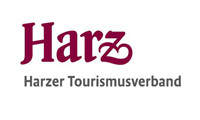On the way in the Scharzfeld Dolomites
Steinkirche, Schulberg, Unicorn Cave, cliffs and Scharzfels castle ruins
best season

On the way in the Scharzfeld Dolomites
Steinkirche, Schulberg, Unicorn Cave, cliffs and Scharzfels castle ruins
151 Ruine Scharzfels
101 Einhornhöhle
You walk through forest, geology, Ice Age and Stone Age, through cliffs, encounter cave bears and still hear the echo of French artillery. This route runs through perhaps the most historically significant region of the South Harz! It is recommended to hike the route clockwise, so the opportunities for refreshment come when you have walked up a good appetite.
We start the route under the bridge of the B 243 on the western edge of Scharzfeld. From here, you first go – always well signposted – up to the Steinkirche, a natural cave crevice where hunters and gatherers sought shelter and tended campfires at the end of the last Ice Age. In the Middle Ages this was expanded into a church space with a pulpit, baptismal font, and crypt. The forecourt was used for burials and was built over. The ritual use likely ended with the Reformation. The path then leads over species-rich semi-dry grasslands up to the Ritterstein, where one can still see remains of ramparts and ditches, probably an early medieval bastion in the vicinity of Scharzfels Castle. Here, in the old tradition with a wide panoramic view over the South Harz, the Easter fire is lit.
The path follows the ridge of the Steinberg past a monument to "Turnvater" Jahn into the forest and soon descends on a narrow path into the Bremke valley, where a campsite, an outdoor pool, a restaurant, and further up a forest playground await. At its southeast corner, the path climbs over the valley stream and soon steadily through deciduous forest up to the Rottstein cliffs.
Here, in the dolomite cliffs on the left below the path, there are rock shelters (abris); here possibly the underground cave system of the Unicorn Cave begins or began. Along this section, some information boards provide details about forest, ecology, and geology.
The path continues through deciduous forest on the ridge clockwise around the source basins of the streams in the Rott and Hasenwinkelbach valleys to the upper edge of the Wolfskuhlen valley.
200 m left on the southwest edge of a clearing lie the comparatively inconspicuous artillery positions of French troops from 15 September 1761 in the undergrowth, from which – during the Seven Years' War – first the Frauenstein and then the Scharzfels Castle were battered into ruins. Shortly thereafter, well signposted 150 m to the left is the Frauenstein, a dolomite rock equipped with a bastion securing the mountain side of Scharzfels Castle. Vault remains are still visible.
Scharzfels Castle, built around the year 1000, was of great territorial historical importance. Information boards explain the history and former structures.
In the "castle restaurant", after about half the distance, a welcome refreshment awaits (closed on Mon, Tue and in winter on Wed). Afterwards, a visit to the upper castle with its magnificent panoramic view is initially recommended, then the short signposted circular route around the castle rocks, then descending into the Hasenwinkel valley and ascending again on the other side, where a tour of the Unicorn Cave is a "must" for every visitor to the South Harz.
Here too, before or after the cave, there is the option to refresh at the "Haus Einhorn". The cave is a place of long-lasting scientific research, starting from the legendary unicorn through the Ice Ages and cave bears to the Neanderthals and early researchers such as Leibniz, Goethe, or Virchow.
Along the Kaiserklippe and other dolomite rocks, the path heads west and soon leads down at the edge of meadows with beautiful views of the wide Harz foreland into the Rott valley and climbs further west up the Schulberg. Here, a signposted path allows a circuit around the Schulberg, which faces south, showing rocks and abris where people lived in the Middle Stone Age. Through the lower Bremke valley, the last section leads up to the now familiar Steinberg, below the Ritterstein and above the B243. Here the hiker may pause and think of Hermann Löns, who often stayed here with his Barbis in-laws around 1908, also sitting at the Ritterstein and writing something like:
"Oh how beautifully quiet it is in Scharzfels, far from the clatter of automobiles!"
After a few steps, the hiker is back at the starting point, where their car is parked or the short path leads to the Sattlergasse bus stop in Scharzfeld.
Steinkirche car park, Am Schmeerberg 2, 37412 Herzberg am Harz
Scharzfeld Sattlergasse
It appears that you are using Microsoft Internet Explorer as your web browser to access our site.
For practical and security reasons, we recommend that you use a current web browser such as Firefox, Chrome, Safari, Opera, or Edge. Internet Explorer does not always display the complete content of our website and does not offer all the necessary functions.